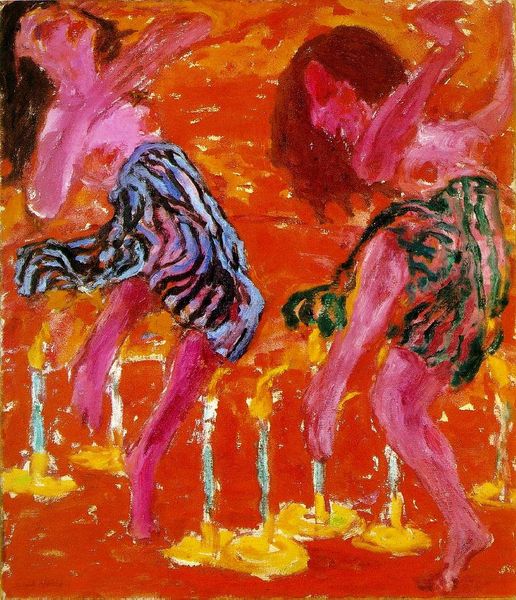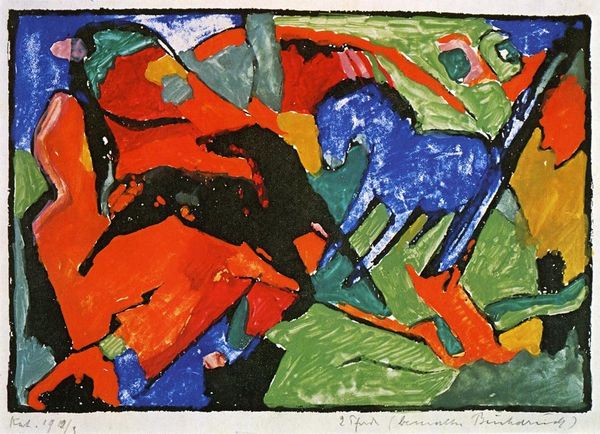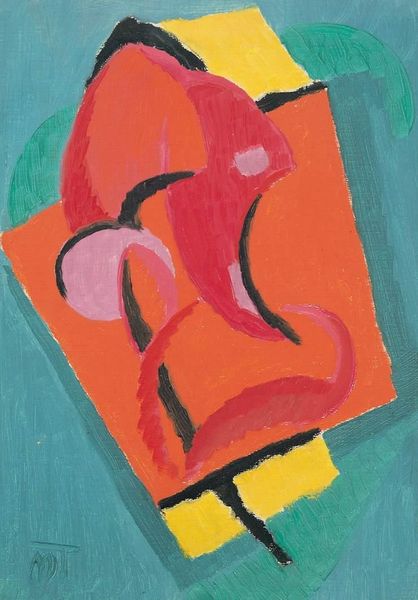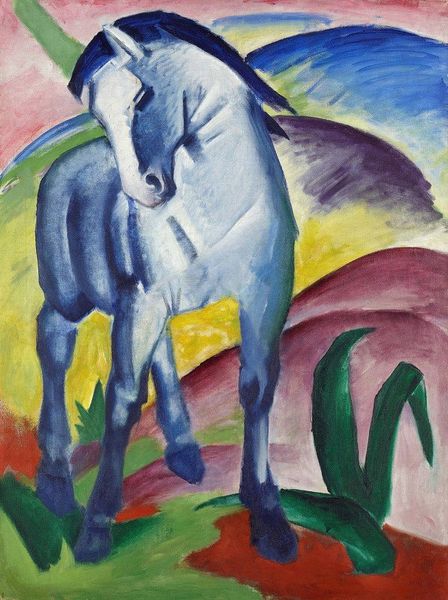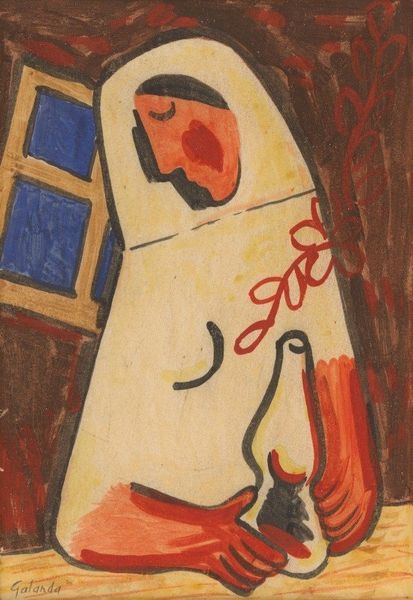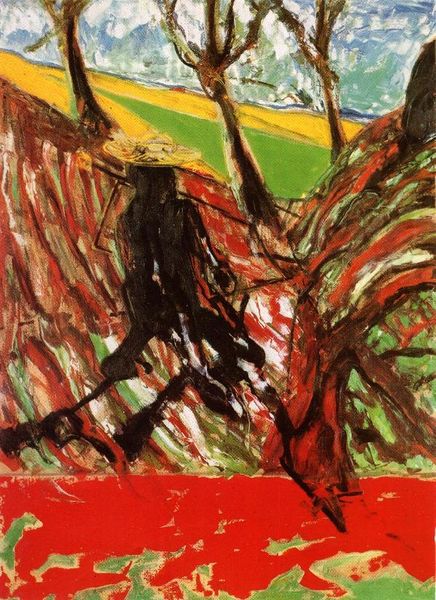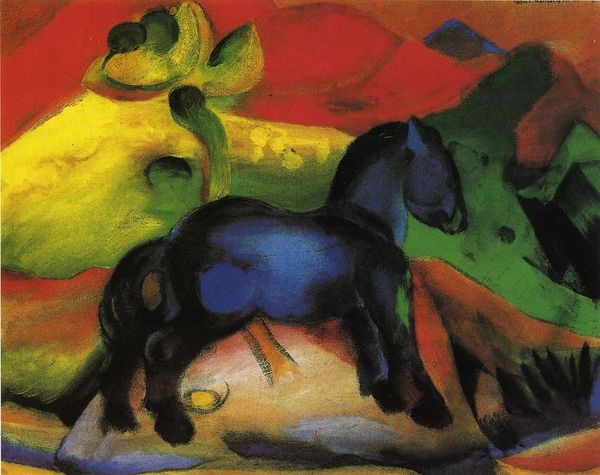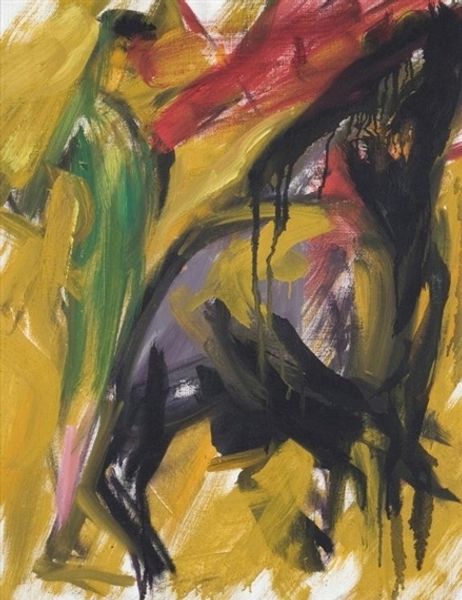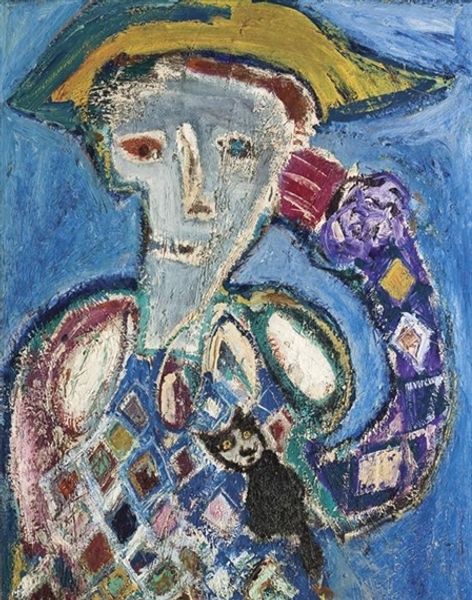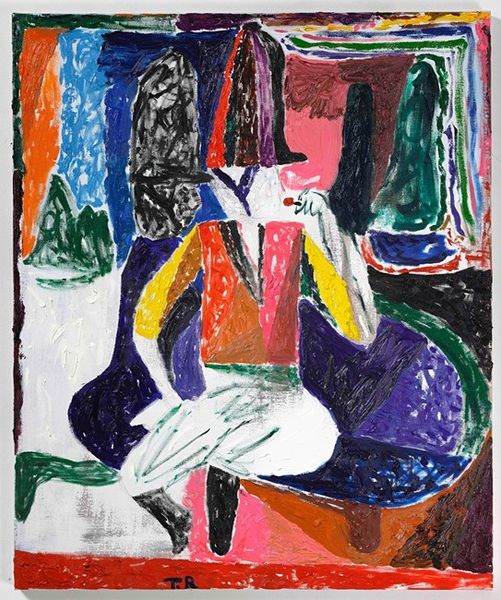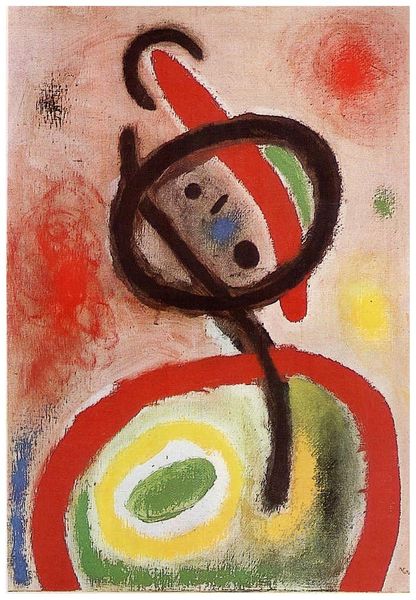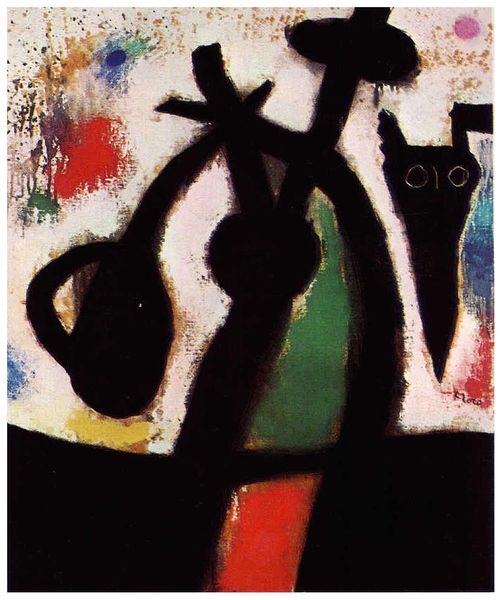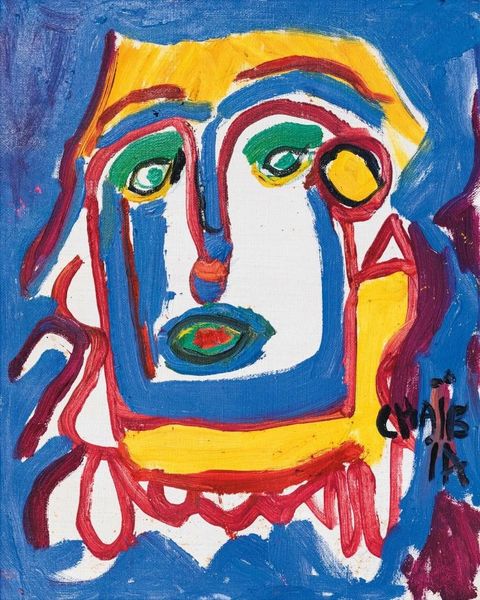
Copyright: Public domain
Curator: Look at the materiality of Malevich's "Man with Horse" from 1932; observe how the visible brushstrokes and the somewhat crude application of oil paint contribute to a fascinating raw, unfinished quality. Editor: There’s something unsettling about its symbolic language. The figure, nearly devoid of specific detail, the horse... grazing but indistinct. The shapes remind me of ancient pictograms trying to tell a story about labor and loss. Curator: And I think we see Malevich working with rudimentary shapes, essentially the base materials of form to convey these rural subjects. His process is evident in the texture, and it underscores his deep engagement with the social conditions of the time, especially with forced collectivization underway in the Soviet Union. Editor: The color palette certainly reinforces a somber, perhaps even desperate, mood. Red, green, and blue, laid against each other… But the man himself seems weighed down, burdened by what is above him. It is as though, the revolution did not emancipate them, that, somehow the people got turned into mere raw materials. Curator: The red could symbolize revolution, certainly, but it is also earth. There are also strong hints of how suprematism, that pure abstract art, struggled to conform to Stalinist dictates requiring clear representation. See how it barely avoids pure form to depicting recognisable forms, but how it does not offer them any psychological or emotional deepness Editor: Indeed, you are quite correct about that point of contention, in those days when art struggled under social realist ideas... there's that feeling again that these archetypes, stripped down to simple form are speaking more than surface, about the symbolic weight. I get this idea that this work explores the anxiety and suppression around the man in this brave new Soviet utopia. Curator: A utopia achieved, however, with paint that he spread over linen! The artist is constrained as the man in the field... that’s it that makes it a beautiful reminder of struggle. Editor: Thinking about all this context and technique, and symbolism... that adds so much. It does leave me to consider a more complete appreciation of the psychological and historic narrative here. Curator: Yes. Material restraints reflect real constraints.
Comments
No comments
Be the first to comment and join the conversation on the ultimate creative platform.
